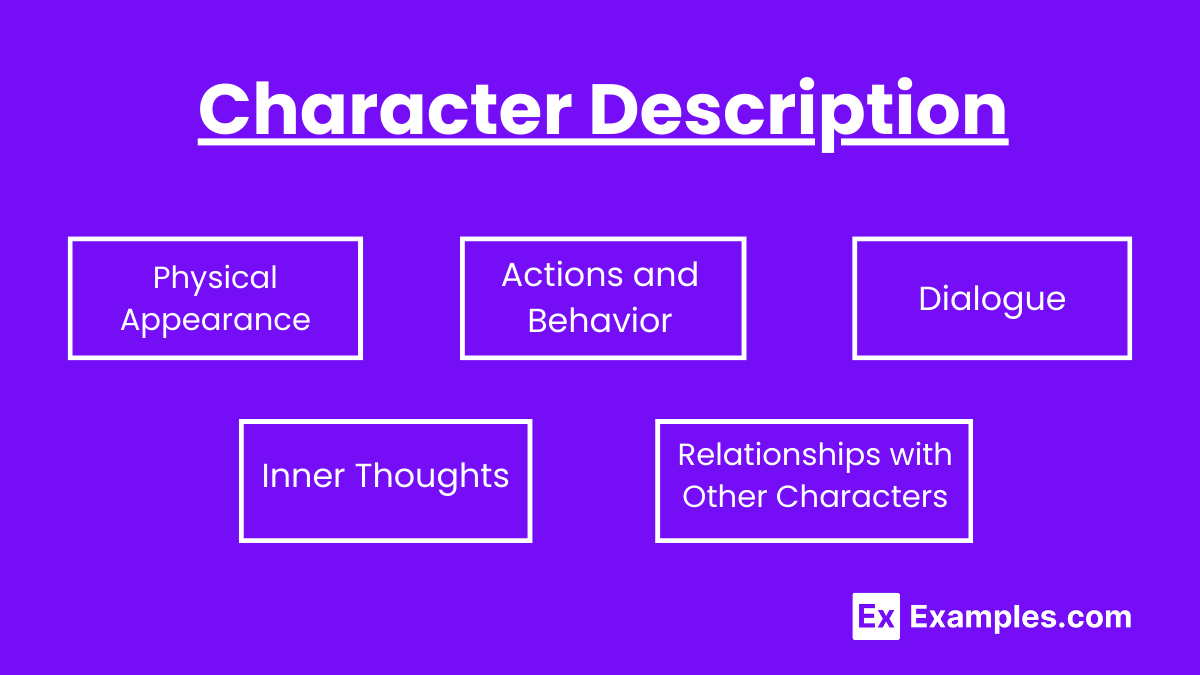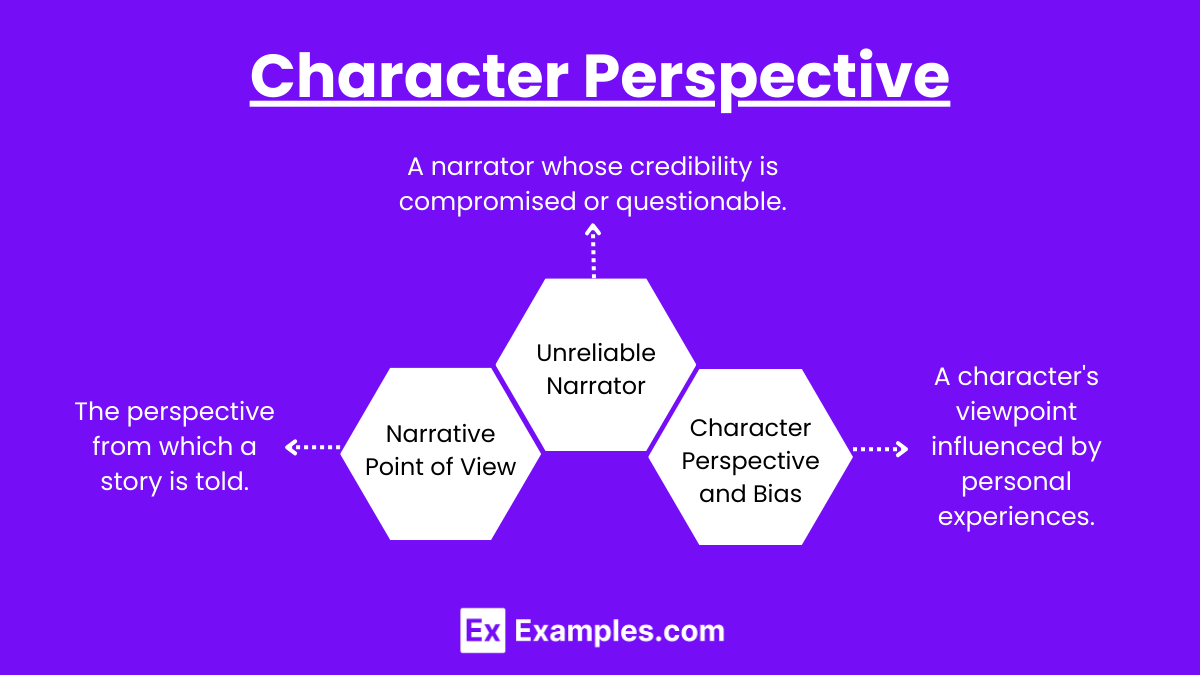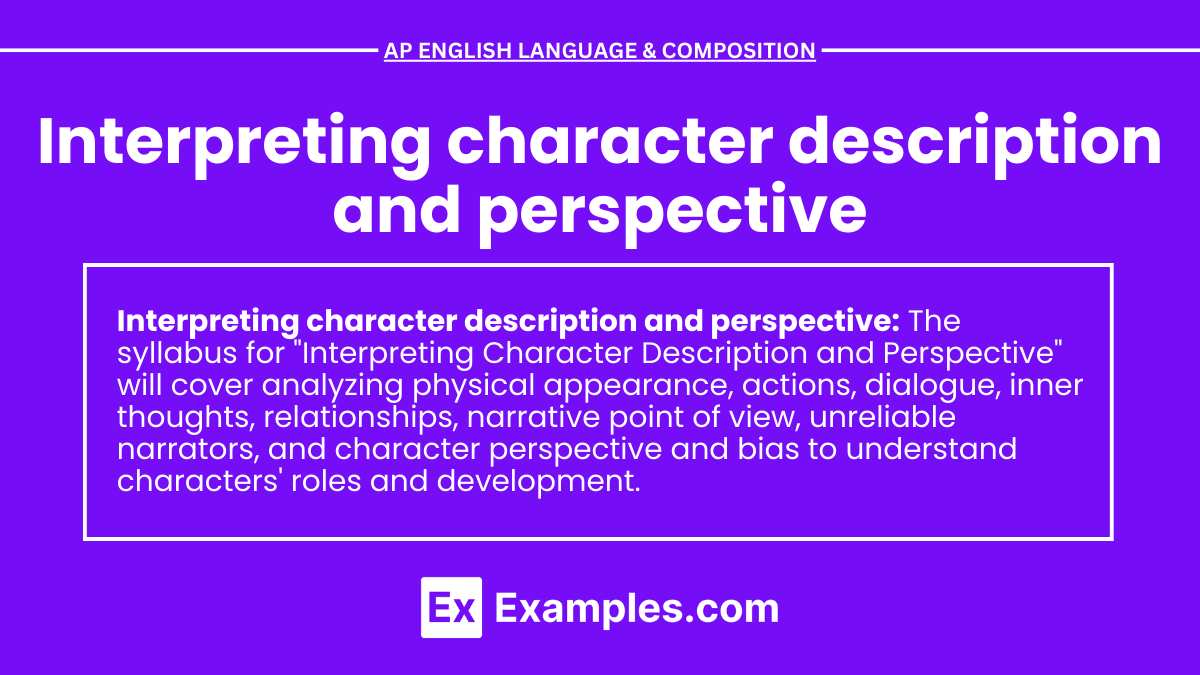In the study of AP English Language and Composition, interpreting character description and perspective is essential for a deep understanding of literary texts. Analyzing how authors portray characters through rhetorical sentences and narrative techniques enriches academic essay writing and argumentative speeches. By examining characters’ physical traits, actions, dialogue, and inner thoughts, students can uncover the underlying themes and motivations within a narrative. This skill is crucial for success in AP English Language and Literature, as it allows students to develop nuanced interpretations and articulate their analyses effectively.
Learning Objectives
By the end of this lesson on interpreting character description and perspective, students will be able to develop a final thesis statement that effectively captures the nuances of character portrayal. They will enhance their critical thinking skills by analyzing rhetorical sentences to understand characters’ complexities. Students will practice writing rhetorical essays, persuasive essays, expository essays, and explanatory essays, using cumulative sentences to support their analyses effectively in one coherent paragraph.
Character Description

Physical Appearance:
- Authors use detailed descriptions of a character’s physical traits to convey their personality, status, and role in the story.
- Example: In “The Great Gatsby” by F. Scott Fitzgerald, Jay Gatsby’s elegant appearance and lavish clothing symbolize his wealth and desire for acceptance.
Actions and Behavior:
- A character’s actions and behaviors provide insight into their motivations, values, and development.
- Example: In “To Kill a Mockingbird” by Harper Lee, Atticus Finch’s calm demeanor and fair actions highlight his integrity and moral strength.
Dialogue:
- The way characters speak, including their choice of words, tone, and speech patterns, reveals their background, emotions, and relationships.
- Example: In “Pride and Prejudice” by Jane Austen, Elizabeth Bennet’s witty and assertive dialogue reflects her intelligence and independence.
Inner Thoughts:
- Access to a character’s inner thoughts offers a deeper understanding of their internal conflicts, desires, and complexities.
- Example: In “Crime and Punishment” by Fyodor Dostoevsky, Raskolnikov’s internal monologues reveal his guilt and moral struggle.
Relationships with Other Characters:
- Interactions and relationships with other characters can highlight different facets of a character’s personality and role in the story.
- Example: In “Harry Potter” by J.K. Rowling, Harry’s relationships with friends and foes illustrate his growth, values, and resilience.
Character Perspective

Narrative Point of View:
- The narrative point of view determines whose perspective the story is told from, influencing the reader’s understanding and connection to the characters.
- First Person: Offers an intimate and subjective view of the character’s experiences and thoughts.
- Example: “The Catcher in the Rye” by J.D. Salinger, narrated by Holden Caulfield, provides a direct insight into his rebellious and confused state.
- Third Person Limited: Focuses on the thoughts and feelings of one character, providing a more focused but still subjective view.
- Example: “Harry Potter” by J.K. Rowling, primarily follows Harry’s perspective.
- Third Person Omniscient: Offers a broader, more objective view by providing insights into multiple characters’ thoughts and experiences.
- Example: “War and Peace” by Leo Tolstoy.
- First Person: Offers an intimate and subjective view of the character’s experiences and thoughts.
Unreliable Narrator:
- An unreliable narrator’s perspective can create ambiguity and require readers to question and interpret the true nature of events and characters.
- Example: In “The Tell-Tale Heart” by Edgar Allan Poe, the narrator’s madness distorts his perception of reality.
Character Perspective and Bias:
- Characters’ perspectives are shaped by their backgrounds, experiences, and biases, influencing how they interpret and respond to events.
- Example: In “To Kill a Mockingbird” by Harper Lee, Scout’s childhood perspective offers innocence and honesty, but also naivety.
Analyzing Character Description and Perspective
Case Study 1: “The Great Gatsby” by F. Scott Fitzgerald
- Character Description: Jay Gatsby is described as charming, mysterious, and wealthy, which initially attracts and impresses other characters and readers.
- Perspective: The story is narrated by Nick Carraway, whose ambivalent feelings towards Gatsby provide a nuanced portrayal, revealing Gatsby’s vulnerability and desperation for acceptance.
Case Study 2: “Pride and Prejudice” by Jane Austen
- Character Description: Elizabeth Bennet is portrayed as intelligent, witty, and independent, challenging societal norms and expectations.
- Perspective: The third-person limited perspective focuses on Elizabeth, providing insight into her thoughts and feelings, while also occasionally shifting to other characters to enhance the narrative’s depth.
Case Study 3: “The Catcher in the Rye” by J.D. Salinger
- Character Description: Holden Caulfield is depicted as a troubled teenager, characterized by his cynicism, alienation, and longing for authenticity.
- Perspective: The first-person narrative offers a direct view into Holden’s mind, revealing his complex emotions and unreliability as a narrator.


